AudioCulture
The noisy library of New Zealand music
Te pātaka korihi o ngā puoro o Aotearoa
Maisey Rika
Rika gradually introduced more te reo into her music, building her confidence enough to do a whole album, Whitiora, in te reo. It led to her breakthrough single ‘Tangaroa Whakamautai’ and kicked off a run of successful albums and tours overseas.
Maisey was raised by her mother among her Māori whānau, who incorporated music in every social occasion, meaning that she was performing in public from the age of five (though she did keep contact with her Samoan father, Lolesio Tafua). On her birth certificate, Maisey’s first name is listed as “Mei” but the nickname “Maisey” soon became the name by which everyone knew her. She was born in Wellington and they moved to Rotorua when she was young.
Her mother was a singer under the name Honey Rika, though her given name is Rebecca Tania Arohanui Rika. Honey had a group called the Rika Sisters, with siblings Cheryl and Lulu. Maisey would often attend their shows, passing the time out the back with her brother JJ. During the day, Honey Rika studied to become a nurse so she could support herself and her tamariki. Her first job was in Whakatāne so the family moved there (Honey would go on to become a lecturer at Awanuiārangi, teaching the next generation of nurses). This was also where Maisey’s tupuna came from – Ngāti Pūkeko and Ngāti Awa. She also affiliates to Tūhoe, Te Arawa, Ngāpuhi and Te Whānau-ā-Apanui.
E Hine
Maisey was enrolled in kohanga reo and kura kaupapa, so was taught te reo Māori from a young age. She also began performing live with her mother at venues such as the Whakatāne Manor Inn, initially as a backing singer, then taking over the lead for some songs.
Her talent for singing was recognised and she was made the soloist for the school choir.
While at the boarding school, Hato Hohepa (aka St Joseph’s Māori Girls College), her talent for singing was recognised by Principal Georgina Kingi and she was made the soloist for the school choir. This led to an opportunity to record an album with the choir in Wellington. Maisey was still just 14 years old and was too shy to speak in the recording studio, but fortunately the school principal was there to encourage her.
The resulting album, E Hine: An Anthology of Māori Love Songs (1998) by St Joseph’s Māori Girls College was a breathtaking success – selling double-platinum and being awarded the Mana Reo best Māori language album at that year’s music awards (while Maisey was nominated as most promising female vocalist at age 15). Maisey went on to record two further albums of this kind – 20 Favourite Māori Songs (1999) and Kotiro Māori = Māori Girl (2000). In both cases, her mother helped out as production consultant and provided additional vocals.
In 2004, Maisey was chosen as a contestant on NZ Idol and went through the first few days of competition. However, the judges were not supportive of her representing her cultural identity on the show and she was eliminated for singing waiata in te reo Māori.
She continued to take part in kapa haka performances over the years that followed, though music had to take a backseat as she undertook a degree at Waikato University studying psychology, te reo Māori, and education (from 2002 onward). Near the end of her five years of study, she had a child with her partner Bossy Hill. Maisey felt it was important that her son should be raised in a household where people followed their passions and decided it was time to begin writing her own songs.
Reconnect
Maisey moved back to Whakatāne and took a job at Te Tohu o Te Ora o Ngāti Awa (Ngāti Awa Social and Health Services). Maisey, Bossy and their son lived together with Maisey’s brother JJ, so he was at hand to help with the songwriting, while Bossy worked as their manager.
JJ focused on writing the music, while Maisey would write the lyrics. Occasionally if JJ had a good set of chords going when she got home, Maisey might even work out her lines on the spot. Sometimes JJ might come up with a vocal melody himself (as on ‘Reconnect’ and ‘Children of Romania’).
Maisey’s first self-titled EP arrived in early 2009 and showed she had an equally soulful voice when singing in English as she had during her years of singing waiata Māori.
Maisey met film director Shae Sterling, who was interested in setting up his own music label, Moonlight Sounds. He’d already created a run of hit DVDs aimed at car enthusiasts (‘High Octane’) and brought his talents to her first music video, ‘Reconnect’. This beautifully drew out the song’s themes around young Māori reconnecting with their heritage (it eventually gained over a million views on YouTube). Maisey’s powerful lyrics were recognised by a nomination for APRA’s Maioha award (for the song ‘Repeat Offender’) and she won best Māori female solo artist award at the 2009 Waiata Māori Music Awards.
Tama Waipara became a mentor for her over the years that followed.
Another important person she met around this time was Tama Waipara, who happened to be performing at the same Matariki event as her. He was so impressed that he asked her and JJ to support him for a national tour. Waipara became a mentor for her over the years that followed.
Tohu
Maisey’s job and family life kept her very busy, but Sterling wanted to ensure she continued with her music so he set up a recording studio in her back shed where she could work towards an album. Then a week-long recording session was organised in Waiuku with producer and string composer/violinist Mahuia Bridgman-Cooper. Mahuia’s experience meant that Maisey’s pop songs could receive the orchestration they deserved – whether this was through rock instruments, horn lines, string parts or traditional Māori instruments. He also brought on board a range of top-rank musicians such as Joel Haines (guitar), Hayden Wharewaka (drums), Nick Gaffaney (drums), and Godfrey De Grut (keyboards).
The album Tohu came out on 12 October 2009 and had an upbeat set of tracks that fell somewhere between the sounds of Tracy Chapman and India Arie. Maisey presented her own heartfelt view on the world via her lyrics: describing her son waking her in the night on ‘Musical Pillow, Musical Bed’; addressing the plight of a young Māori youth who had lost their way on ‘Game of Life’; and writing an ode to ‘Omaio’ where she’d often spend her holidays with whānau. The album subsequently won four categories at the 2010 Waiata Māori Music Awards: best Māori female solo artist award, best Māori pop album, best Māori song and best Māori songwriter of the year.
Maisey stayed busy over the next couple of years, touring regularly. In 2009, she was asked by NZ Rugby Union and NZ Tourism to perform in Japan – she appeared at the Giant Rugby Ball set up in Tokyo by NZ Promotional Festivities (as part of the build up for New Zealand hosting the 2011 Rugby World). After this Maisey and JJ travelled to Taiwan as part of the NZ Commerce and Industry Office and MFAT’s delegation, to perform at the Discovering New Horizons Gala.
In 2010, Maisey played the Polyfest festival held on the Gold Coast as well as doing shows in Sydney, Brisbane, and Perth. She performed regularly at home, including a slot at the Toi Māori’s Pao Pao festival and a performance at the Silver Scroll awards, covering the winner of the Maioha award 2010 (‘Sin City’ by Maitreya) with The Exiles – the group of her producer, Mahuia Bridgman-Cooper.
Her overseas activity increased even further in 2011, with Maisey touring Hawaii with the Grammy-winning Hawaiian slack-key guitar artist, George Kahumoku Jr. Maisey and JJ also went with Tama Waipara to the Netherlands to play as part of the Māori Mana Exhibition, and while there she took time to shoot a music video for ‘Sink or Swim.’ That same year she and JJ toured Australia as the supporting act for Katchafire’s ‘On the Road Again’ tour.
Meanwhile at home, she did a slot at WOMAD festival and a special show with the Auckland Chamber Orchestra (which also included Stan Walker, who had already named her his favourite local singer!). Rika’s growing acclaim as a singer led to the television show Waka Huia devoting an entire episode to covering her career up to this point.
The Barefoot Divas and Whitiora
In early 2012, Maisey was offered the chance to be part of a remarkable collaboration. An Australian promoter, Vicki Gordon, wanted to put together a show of indigenous songs, poetry, and storytelling for the Sydney Festival 2012 under the name Walk a Mile in My Shoes. A group was formed called The Barefoot Divas, which included Rika alongside fellow Māori singers Whirimako Black and Merenia, Ngaiire from Papua New Guinea and two aboriginal artists, Ursula Yovich and Emma Donovan. Their performance received such rave reviews that they were asked to reform repeatedly in the years that followed.
For her next album, Maisey planned to record a set of songs entirely in te reo Māori.
For Matariki that year, Maisey performed with Annie Crummer, Ria Hall, and Ardijah vocalist Betty-Anne Monga as Kāhui Whetū (in te reo it means a group of stars or a constellation). This quartet would come together regularly at Matariki festivities over the years that followed.
For her next album, Maisey planned to record a set of songs entirely in te reo Māori. Mahuia Bridgman-Cooper returned as producer, but this time they initially set up at Twisty Poles Studios in Rotorua. The studio was owned by Michael Barker, whose career had already included being the drummer for John Butler Trio (on two albums that reached No.1 in Australia) and on a Split Enz reunion tour. This meant Barker’s skills as a percussionist were on hand for the recording, while Joel Haines returned again and worked with JJ to create complementary guitar lines that also lifted the sound of the album.
Rika took the task of writing lyrics in te reo seriously, so reached out to a number of waiata composers for input. Her uncle Erueti Korewha had composed waiata for many kapa haka groups, so they collaborated on the song lyrics for the track ‘Tangaroa Whakamautai’. The music was initially written on acoustic guitar before being turned into a more epic composition by the addition of string parts composed by Bridgman-Cooper.
Twisty Pole studios was near the picturesque Hamurana Springs where some of the music video for ‘Tangaroa Whakamautai’ was filmed. Additional scenes were filmed at the active volcano on Whakaari (White Island) which is off the coast of Maisey’s hometown of Whakatāne. The track became a huge breakthrough, with over two million streams on Spotify and six million views on YouTube for the video.
Erueti Korewha wasn’t the only whānau member Maisey called on to help write songs for the album – other lyrics were written by her uncles Leo Rika (‘Ohomairangi’) and Te Kahautu Maxwell (‘Ruaimoko’ and ‘Te Ruatekau-mā-waru’). Her uncle Te Kahautu’s te reo class at Waikato University wrote the lyrics for the track that would become ‘Haumanu’ – a song about caring for Papatuanuku. Maisey’s son can also be heard on ‘Pōmarie’ (Ruia Aperahama’s goodnight lullaby for an unborn child). Elsewhere she was assisted by Ruia Aperahama, who had appeared with her on the television show Songs from the Inside which involved songwriters visiting prisons to create songs with inmates.
Through the TV show, Rika formed a friendship with Anika Moa so she brought her on board for the song ‘Ruaimoko’ – named after the Māori god of earthquakes and volcanic eruptions. The track was a haunting reflection on the Christchurch earthquakes, making it meaningful for Moa since she’d grown up there. It was the first time Moa had recorded a song in te reo, so she took the process of pronunciation seriously and thereby created one of the most haunting tracks off the album. Maisey also brought her friend and mentor, Tama Waipara to sing on the track ‘Haumanu’.
The resulting album, Whitiora (2012), was entirely in te reo aside from a rap by Sidney Diamond (aka Young Sid from Smashproof) on the title track, which Maisey felt was too good not to include. The production was world class with additional recording sessions by Andre Upston at RNZ and Ollie Harmer at the Lab Recording Studio. The music went in a number of intriguing directions across the album. Take for example ‘Ruatekau-mā-waru’ which was about 28 Māori Battalion (the title means ‘Twenty-eight’). It was essentially a swing song, though with rhythmic additions such as the sound of poi being used.
The cover showed Rika with a beautiful koru pattern trailing over her bare shoulders, while inside there were intricate illustrations of a tui and ruru (whose call is the last sound to be heard on the album). It was the best-selling local release on the week it came out and provided a perfect representation of Rika’s talents and heritage, which opened up a new way forward for her. For an album based so firmly in ‘Te Ao Māori’, it found many fans overseas; this saw her returning to Australia and Hawaii for shows with her brother JJ at her side.
However, JJ decided around this time that he wanted to learn more about musicianship and so attended the performing arts school in Rotorua. This led him to work as a mentor and tutor for youth in Gisborne, before he returned to the Whakatāne area to do similar work (working with rangatahi in Kawerau). This gradually meant he was less available for touring with his sister, especially when it came to overseas shows.
Maisey had been a full-time musician for a number of years by this point and became busier than ever in the years that followed, travelling as far afield as Guam and regularly touring throughout the Pacific. In 2014, she joined Stan Walker for his attempt to get a song in te reo to No.1 for Te Wiki O Te Reo Māori. The stellar line-up on ‘Aotearoa’ also included Ria Hall and Troy Kingi, and the song reached the No.2 spot. Not quite what Walker had hoped, but still a fine representation of the startlingly talented new generation of Māori songwriters.
Tira
Maisey’s next album, Tira, didn’t arrive until 2016 and again saw her working with Mahuia Bridgman-Cooper, this time at The Lab. It showed Rika’s continued desire to mix the traditional and modern. The album showcased many classic Māori Kirihimete waiata (Christmas hymns) that Maisey had re-worked to suit the themes and environment of Aotearoa. Tira also had new compositions that had been developed on the kapa haka stage, one written by rising star Rob Ruha and another by her uncle Rikirangi Gage. The album also had an impressive line-up of guest vocalists such as Tama Waipara, Troy Kingi, Beau Monga, Hinewehi Mohi, Thomas Oliver, Seth Haapu, and the Modern Māori Quartet.
The album resulted in a run of wins at the Waiata Māori Music Awards.
The album resulted in a run of wins at the Waiata Māori Music Awards: best traditional Māori album (Tira), best female solo artist, best song by a Māori artist (‘Taku Mana’) and also the best songwriter award. However, the following year Rika actually removed her name from contention for best Māori artist, deciding that it was time to allow the opportunity for new artists to receive the award.
Rika’s touring schedule remained as demanding as ever, though she and Bossy now had three children to care for, so there was precious little time for working on a new album. As a result, Rika decided she’d actively need to clear time in her schedule to write new songs in 2019. However, this plan was interrupted by the events at Ihumātao, which led her to drop all her plans to assist with the movement.
Initially, Rob Ruha came to her with a song he had written ‘Ka Mānu’ to support the Ihumātao movement. Rika helped him hastily bring together a line-up of singers and free recording time was supplied by Roundhead and Parachute Studios.
Rika wanted to take the mahi further so worked with Ninakaye Taanetinorau (Tiki Taane’s sister and manager) to arrange an album and a concert to raise further funds. The result was Toitū Te Whenua (2019), which featured Seth Haapu, Vox Dawn, Rob Ruha, Che Fu, Troy Kingi, Tama Waipara, Rei, JessB, NRG Rising, Israel Starr, and Tiki Taane (with Concord Dawn). The title referred to Māori proverb “whatungarongaro he tangata toitū te whenua” (people come and go, but the land remains).
Ngā Mata o te Ariki Tāwhirimātea
On 26 March 2020, Rika’s plans were again disrupted by an unexpected event: the lockdown caused by the arrival of the Covid-19 pandemic to New Zealand. She decided to take this opportunity to write a new set of waiata and the first that came to her was ‘Matariki i te pō’. This inspired the idea to do a whole set of songs around Te Iwa o Matariki – the Nine Stars of Matariki – and their meanings. She investigated the concept more by contacting Māori astronomer Professor Rangi Matamua, whose knowledge helped the songs gain depth.
Recording during lockdown was challenging since it meant upskilling herself on digital recording so she could capture her own parts (often late at night, once the noise of her children wasn’t in the background). She also took a new approach by bringing in a range of musical collaborators to work as producers on the album.
Tiki Taane worked on the waiata ‘Matariki Tāpuapua’ pertaining to the stars Waipunārangi, Ururangi and the weather God Tāwhirimātea. Seth Haapu worked on waiata about the water stars: ‘Waitī Waitā,’ and ‘Tipuānuku Tipuārangi.’ Other producers to collaborate were Horomona Horo, Mara TK, Anna Coddington, Jeremy Mayall, and Marlon Gerbes, and her longtime producer Mahuia Bridgman-Cooper.
Rika’s aim in the project was to make the stories of Matariki more relevant to people’s everyday lives. For example, the waiata about Tāwhirimātea (the God of the Storms) which tries to express the feeling of having a whānau torn apart – just as the blind Tāwhirimātea is unable to see and casts his storms about in anger (the term Matariki is in fact a shortening of the phrase “Ngā mata o te Ariki Tāwhirimātea” that suggests these stars are “The eyes of Tāwhirimātea”).
In early June the lockdown came to an end and Maisey was able to work more freely to complete the album. Amazingly Maisey managed to finish Ngā Mata o te Ariki Tāwhirimātea (2020) in time for its release on 17 July to coincide with the rising of Matariki and she completed an impressive music video to promote the first single, ‘Matariki i te Pō’.
The album shows Rika’s continued passion for using music to express the knowledge within kaupapa Māori as a way to inspire the generations that follow. Her decision to get a moko on her chin in the year prior to this album was also part of her desire to represent Māori as fully as she can. The amazing singing voice that she developed from her childhood is only one part of her success, which has been based on the strength in her culture and a tenacity of spirit to represent this culture to the world.
In March 2022 Maisey Rika collected the 2021 APRA Maioha Award for the third time in her career, this time with co-writer Seth Haapu for her Matariki inspired ‘Waitī Waitā’.
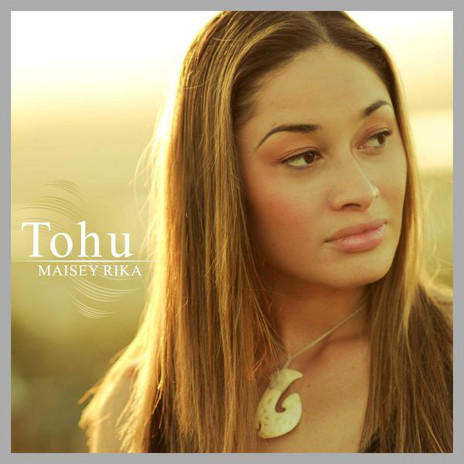
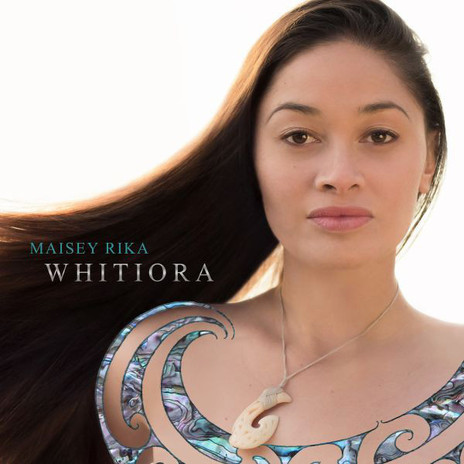
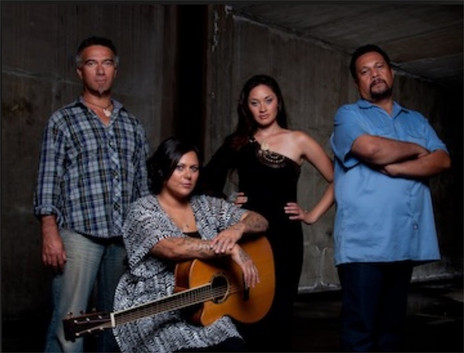
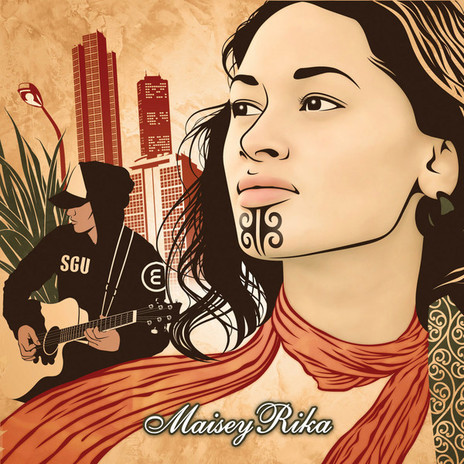
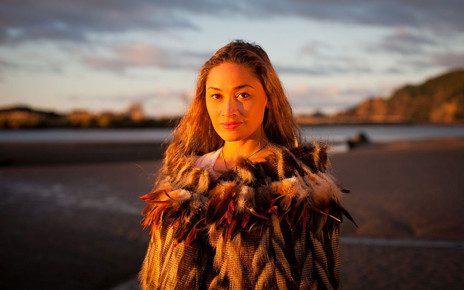
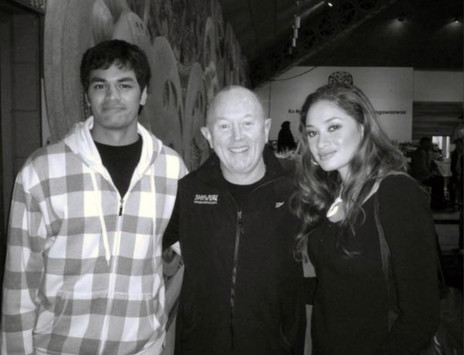
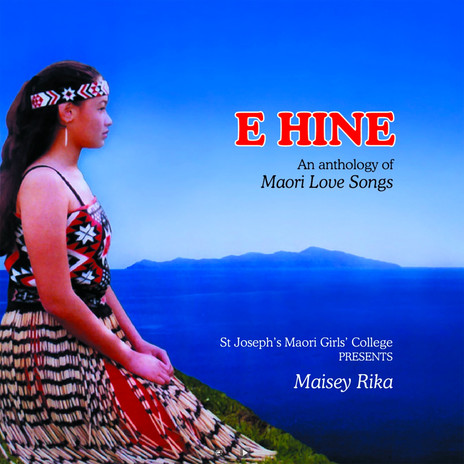
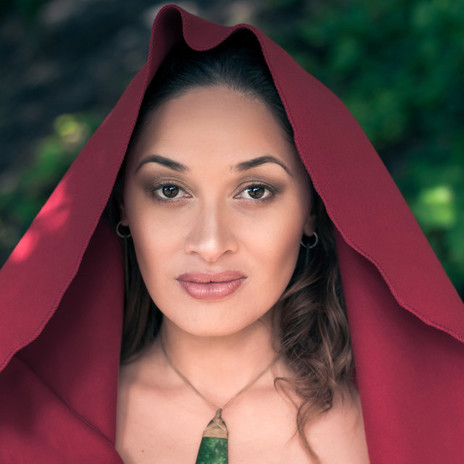
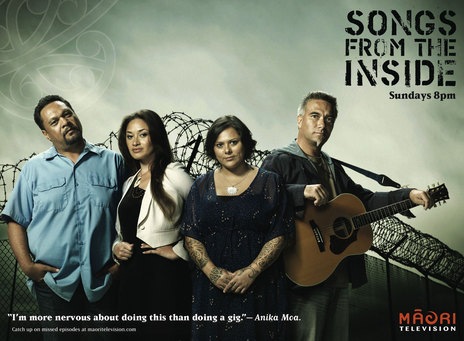
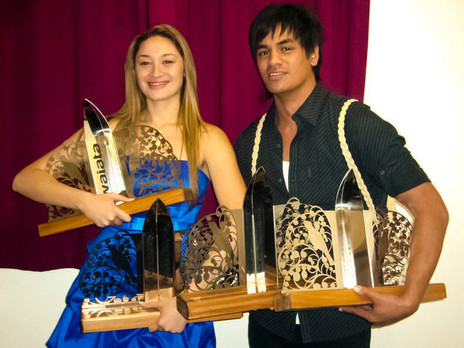
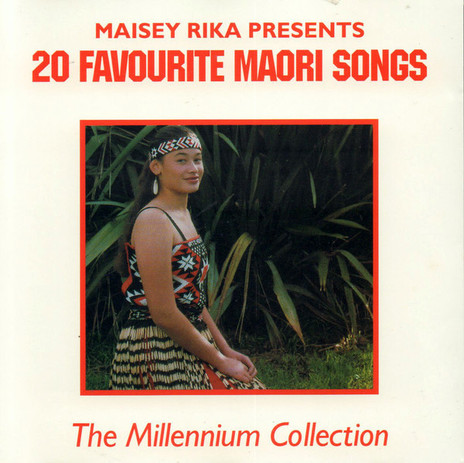
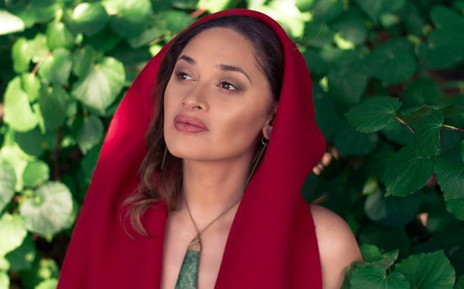
Moonlight Records
South Pacific Recordings
Visit our sister site
NZ On ScreenMade with funding from
NZ On Air






